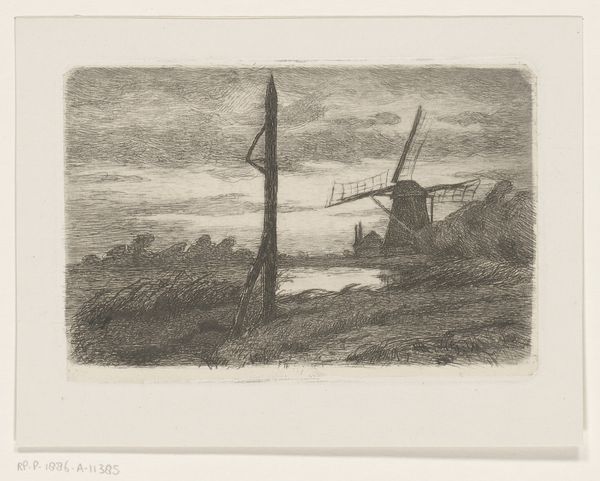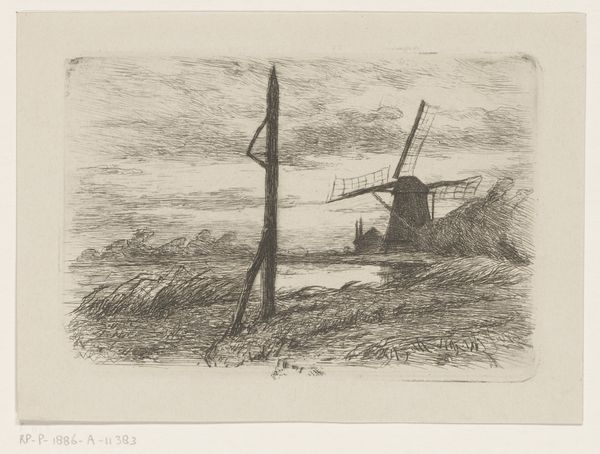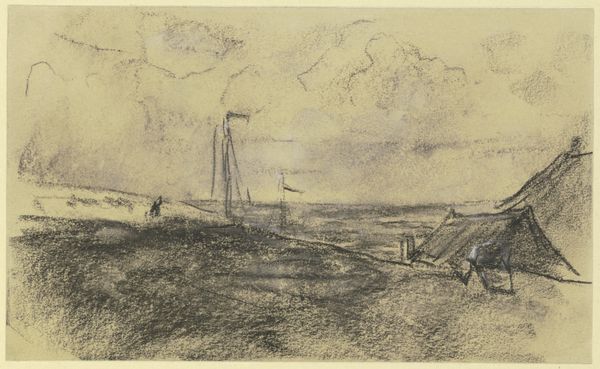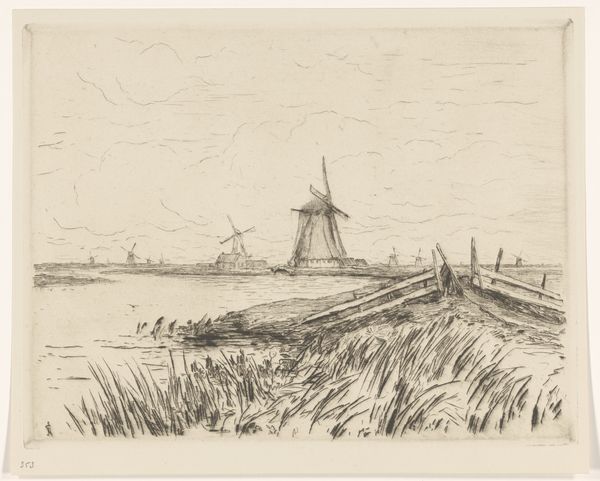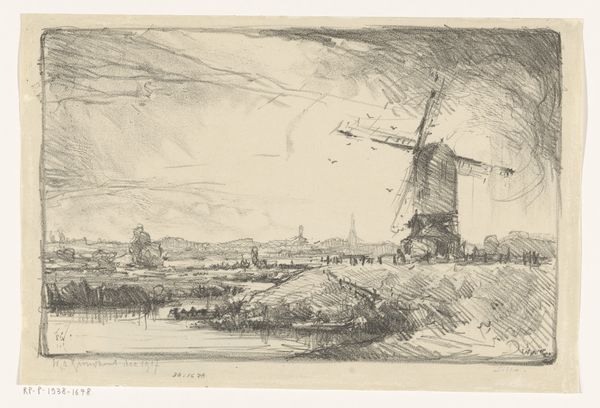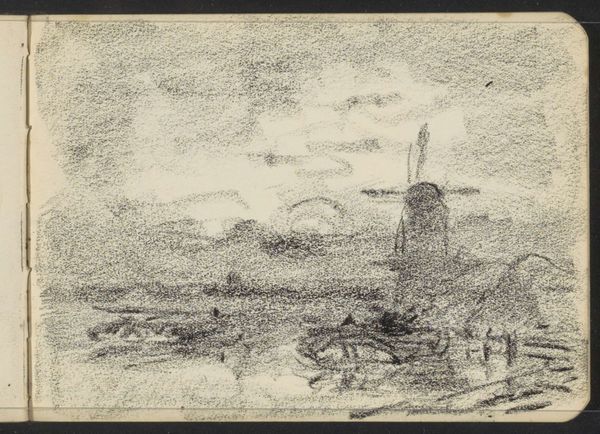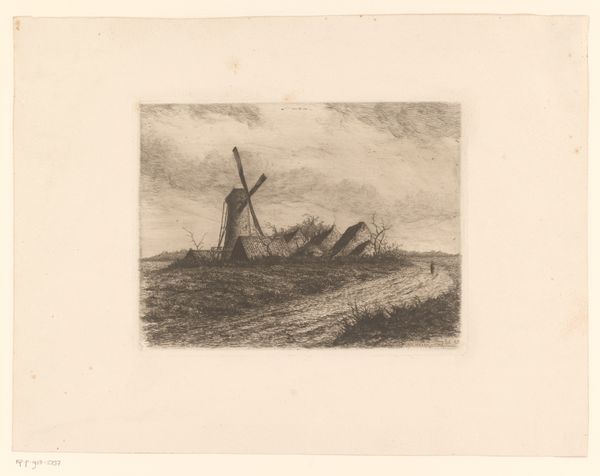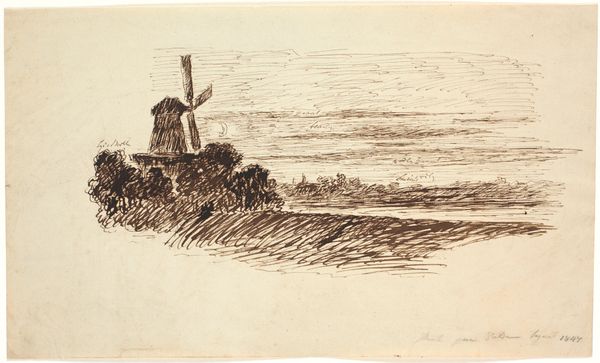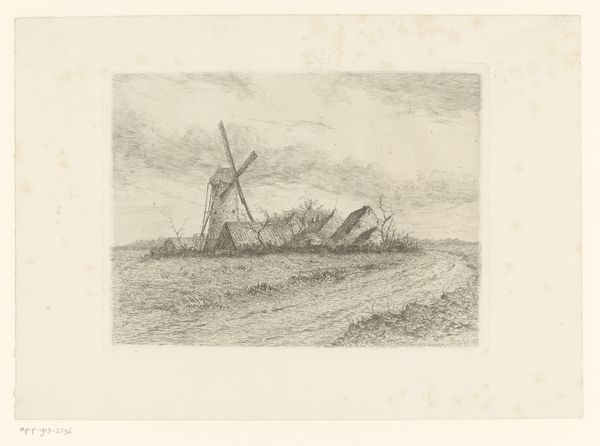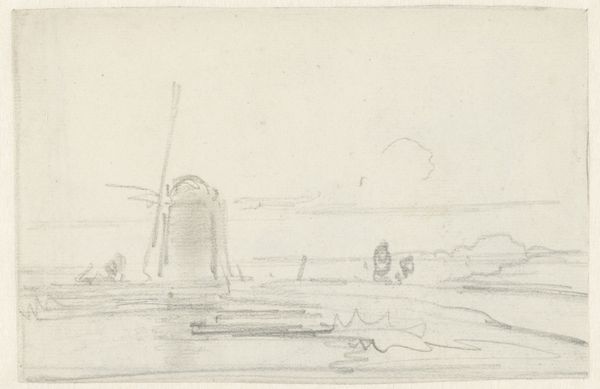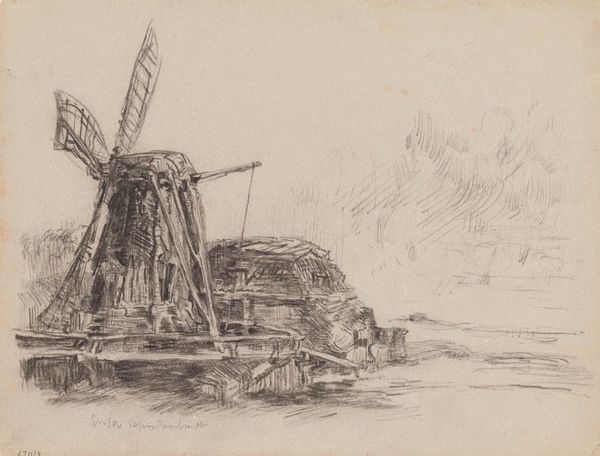
drawing, pencil
#
drawing
#
pencil sketch
#
landscape
#
pencil
#
realism
Dimensions: height 238 mm, width 316 mm
Copyright: Rijks Museum: Open Domain
Curator: Here we have Wilhelmus Johannes Steenhoff's pencil drawing from 1883, titled "Landscape with Pole and Windmill." It's currently held in the Rijksmuseum collection. What are your initial thoughts? Editor: Stark, almost desolate. The sharp verticality of the pole clashes with the curve of the land and the familiar form of the windmill. There is something unsettling in the scene, maybe due to the limited grayscale. Curator: Interesting you mention the pole. In many rural Dutch landscapes of this period, these structures served a practical function, often acting as boundary markers or part of drainage systems. But here, it feels... amplified, almost imposing, doesn't it? Perhaps Steenhoff is playing with the established symbolism of the windmill itself. Editor: Windmills, traditionally, symbolize industry and human innovation taming nature. Here, though, it’s almost overpowered by the bleak landscape, rendered even more somber through the medium of pencil on paper. It's a very deliberate act to move away from the rich color palettes of the time. Is Steenhoff signaling a societal shift, maybe disillusionment? Curator: It's fascinating to consider disillusionment. In art, windmills have carried varied symbolism. Traditionally, they are a sign of prosperity but they can represent the futility of labor or even, as some scholars argue, the repetitive, grinding nature of existence. Editor: And the positioning of the pole, so deliberately in the foreground, obstructing our view—it seems to ask: what are we *not* seeing? Is Steenhoff critiquing something inherent in the relationship between progress, represented by the windmill, and the natural world? Is it about man's place, claiming land, and perhaps destroying its native context? Curator: Perhaps. By 1883, the effects of industrialization were becoming much more evident. A landscape, once idealized for its pastoral beauty, was being radically altered, a disruption visualized by Steenhoff here through stark simplicity. Editor: Thank you, it changes my perception, now it feels like a commentary. Curator: These subtle visual clues draw us into a deeper consideration of not just this Dutch landscape, but our ongoing dialogue with technology and the environment. Editor: Indeed, thinking about Steenhoff's context makes it all the more evocative, and haunting.
Comments
No comments
Be the first to comment and join the conversation on the ultimate creative platform.
